How Our Blind Dog Navigated RV Life
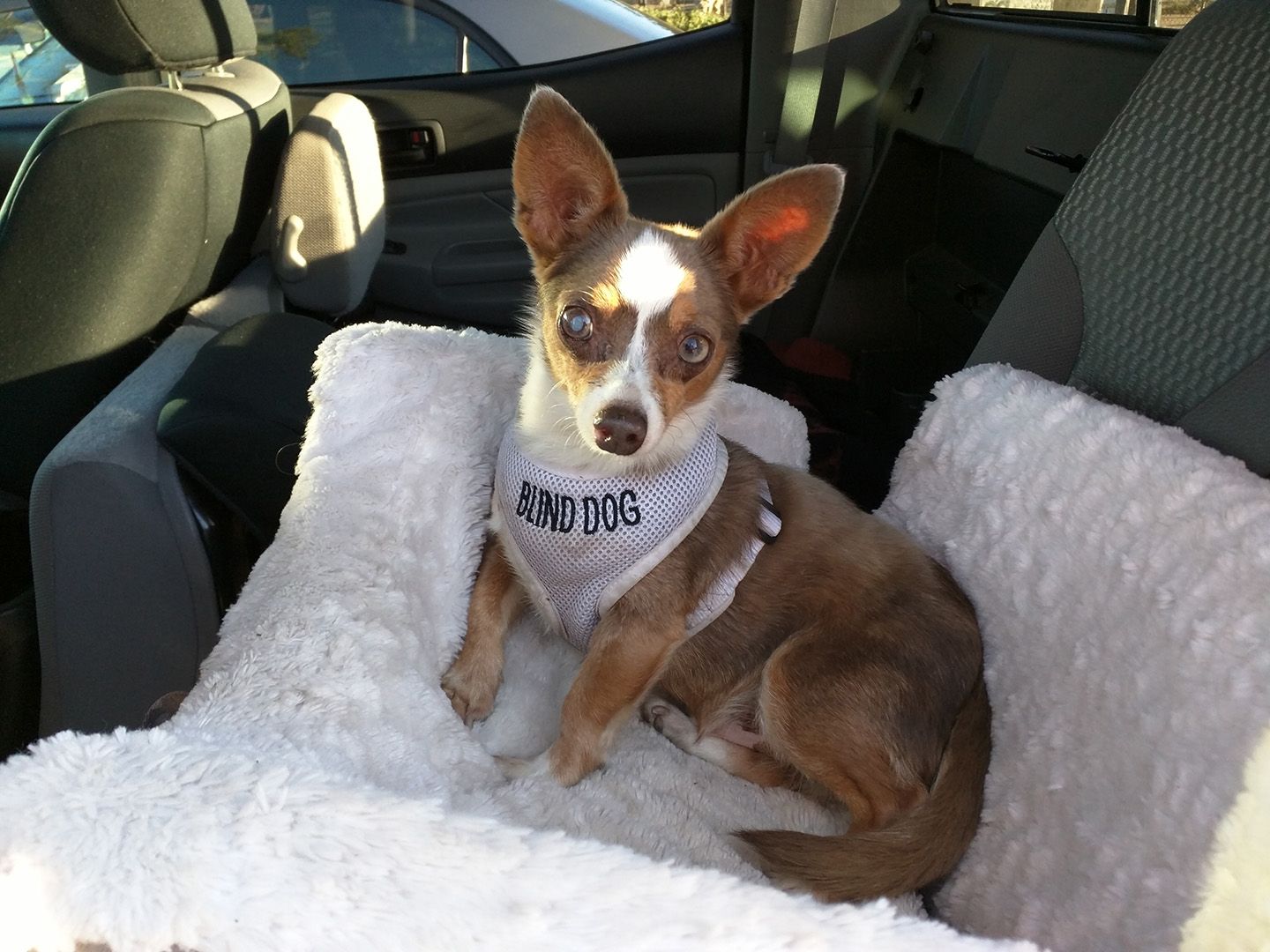
This is a story of how our previous dog Stimpy, a runt-of-the-litter chihuahua mix rescue, adjusted to life as a blind dog, how he remained an active adventure dog, moved to an RV, and spent his retirement days traveling with us around the country.
How we found out Stimpy was blind
For a while, we didn't even know Stimpy was losing his vision. At the time, we were living in an apartment and noticed that occasionally Stimpy would bump into the furniture. We thought his vision was maybe a bit blurry, as he kept walking into a white-on-white corner in a hallway. We shrugged it off because we thought he just had less than stellar vision — we never thought it would have deteriorated further.
And then we moved. Day one in our new place and he was bumping into everything! Apparently, he had just done a really great job of memorizing the layout of the old apartment. We were so worried and took him to the vet right away. They did some tests and confirmed he was losing his vision. We were sent to an ophthalmologist (eye specialist) who let us know Stimpy had cataracts and a degenerative disease in the back of his eyes, at best could see light and darkness, and would soon be fully blind.
It was devastating. We felt awful. He was getting around okay with some vision, but how would he do once he was completely blind? I immediately felt like I had to "baby" him, but I think one of the reasons he had done so well up until this point is that he wasn't babied. He just relied on his other senses to get around.
Cataract surgery and acceptance
Cataract surgery is an option to retain or recover sight for some dogs. It's expensive and not guaranteed to work. For us it wasn't even an option because our specialist said there was no fix for the disease in the back of Stimpy's eyes, so fixing the cataracts was unnecessary.
I want to mention this because you know what, Stimpy did just fine as a blind dog. He lived a wonderful, happy life. So if surgery is out of your budget, or just something you don't want to put a senior dog through, don't feel bad about that.
What we did do, at our vet's suggestion, was keep up regular appointments to monitor the pressure in Stimpy's eyes, to make sure he did not develop painful glaucoma. He was also prescribed two different eye drops, twice a day.
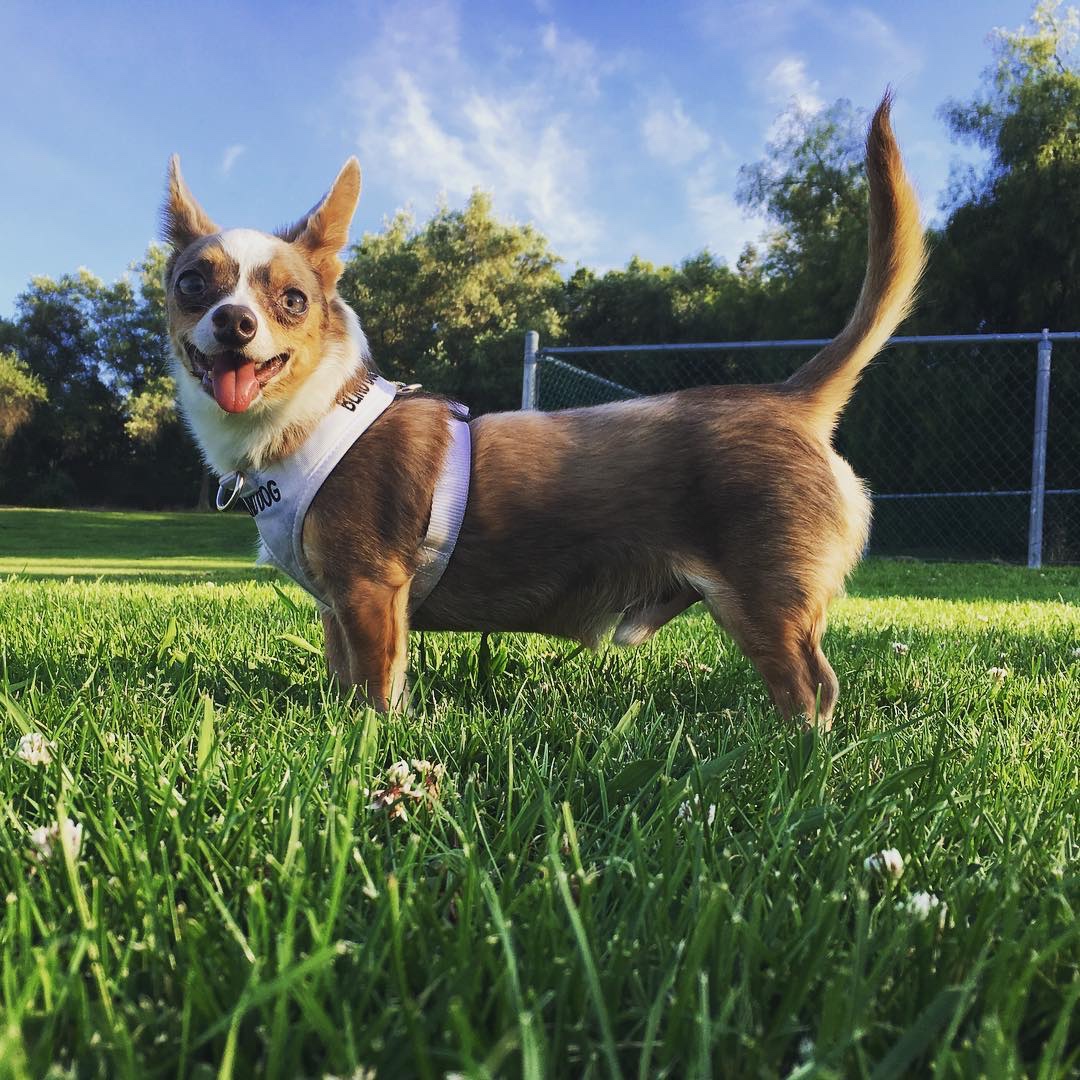
Oh, and at this point if you're wondering "What the heck is that dog?" the answer is, Chihuahua/Rat terrier, with a sprinkling of Lhasa Apso, Miniature Poodle and 12.5% of who knows what.
Sight is not a dog's strongest sense
Did you know this? I didn't! As humans, we rely so heavily on sight, but for dogs, sight is NOT the strongest sense! Their sense of smell ranks number one. And sure enough, once Stimpy was fully blind, we noticed he would walk with his nose to the ground, something he didn't do with full vision.
Dogs also have amazing hearing, and it is their second strongest sense. We're convinced Stimpy could hear sounds echoing from walls, and after the initial learning curve, he never walked into walls.
Tips to help blind dogs to acclimate
Here are some things we did to help Stimpy adjust to blindness, while letting him keep his independence.
I hope you don't like redecorating
Try not to move things or furniture around. Stimpy had several pet bed spots in the RV/apartment where he felt very safe, so keep those in place. We had one pet bed in each room that never moved. For example, we had one at the foot of the couch that was kind of a puffy pillow. When he got to it, he would aim at the couch and just JUMP! (We called it the "launch pad.") Imagine if I moved that pillow!?
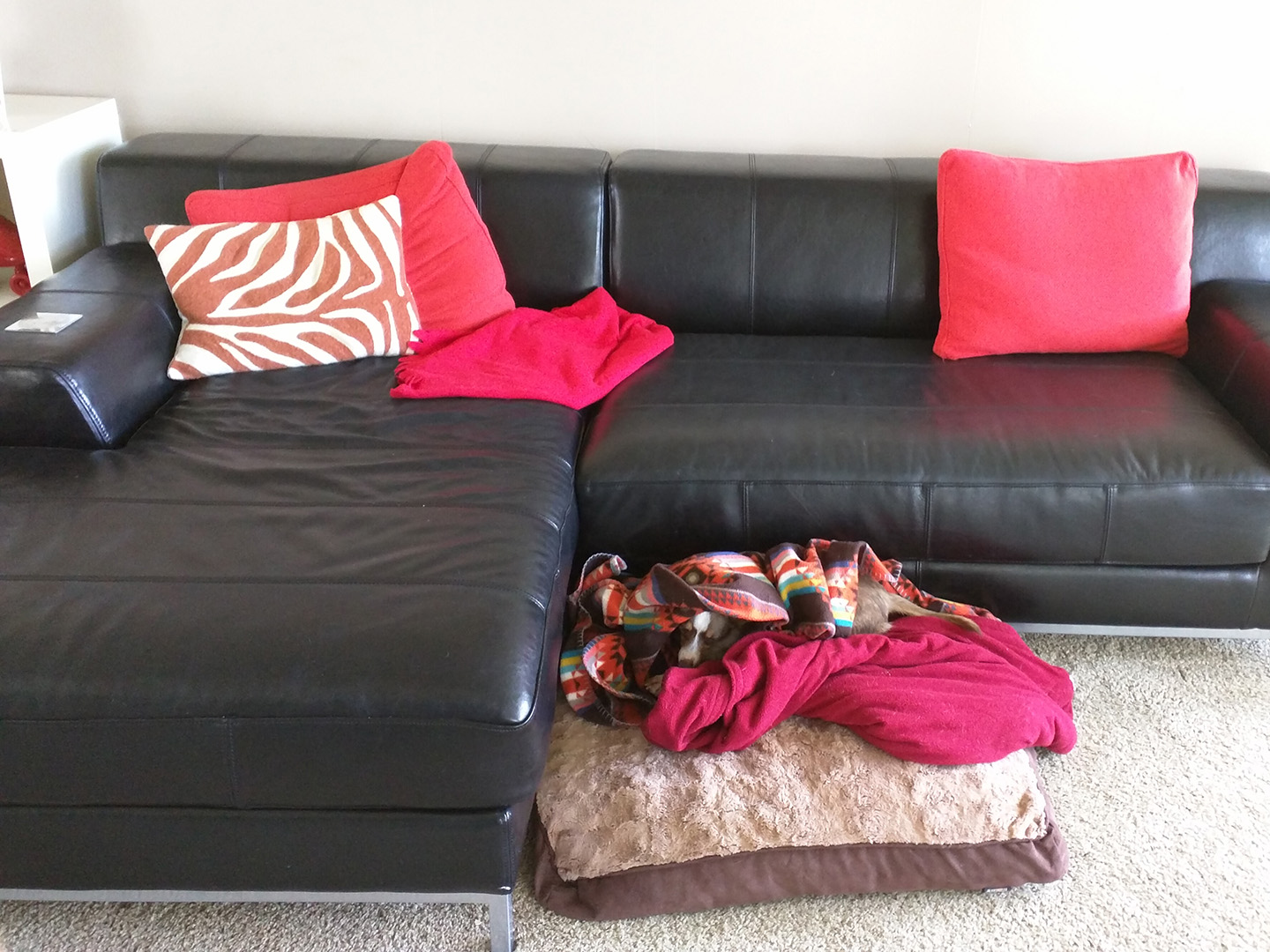
The "launch pad" also doubled as a comfy sleeping place. Can you see him?
Introduce new spaces gradually
When we moved from our apartment to the RV, we had to teach Stimpy a new space. Luckily, it was a small space (roughly 250 sq feet) and basically a long narrow hallway. We had moved from a 4 bedroom house so familiarizing Stimpy with the RV was actually pretty easy. We started by keeping the bedroom sliding door closed, to limit the area to explore. Once Stimpy learned the kitchen/living area, we opened up the door so he could explore the bedroom/bathroom.
We brought his pet beds from home with us into the RV, so he had familiar smells and comfy spots. Inch by inch, we moved his pet beds out of the way, and in the end, one of his favorite quiet places was under a kitchen chair in the RV dinette.
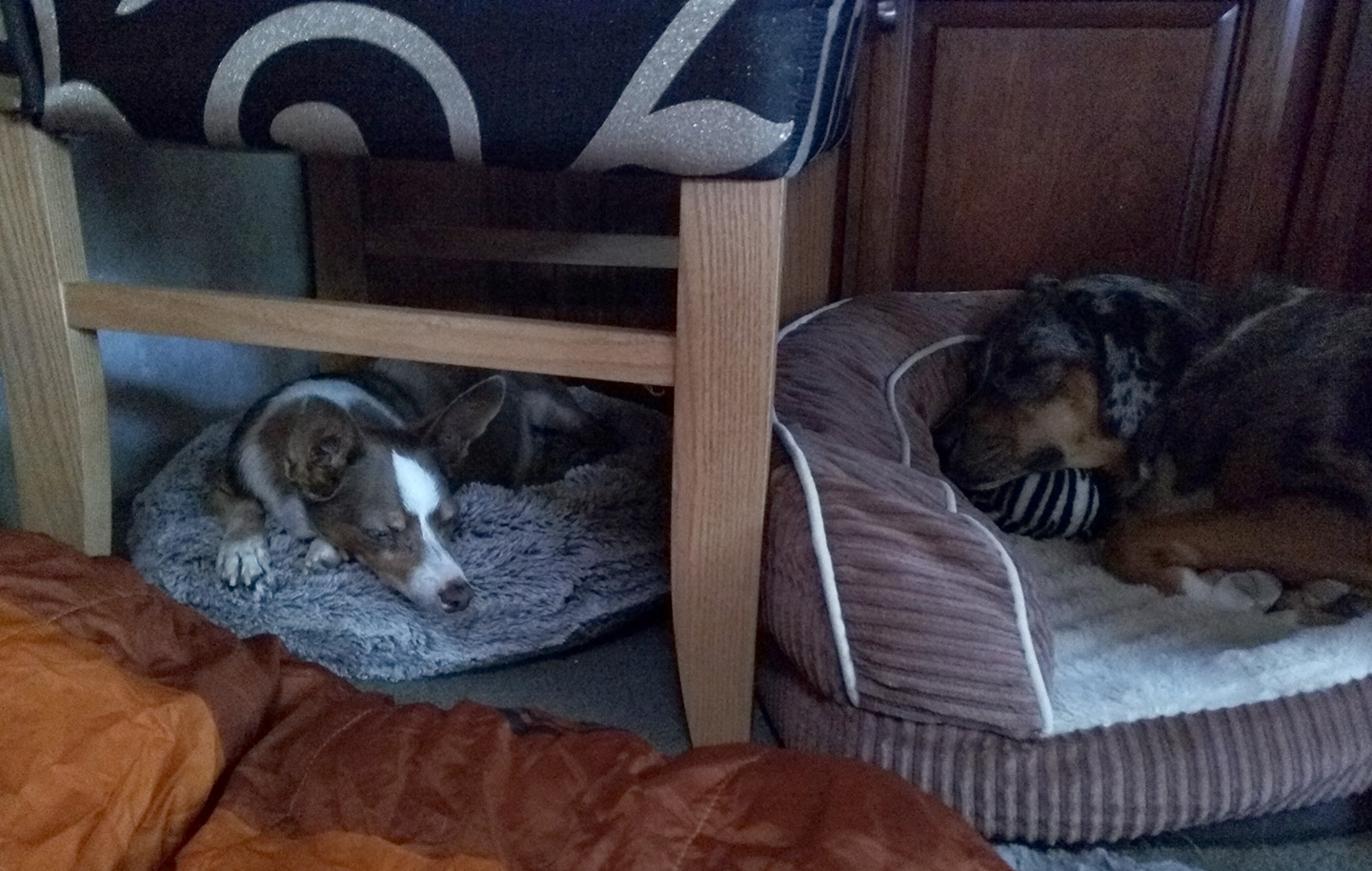
We called Lily's area "the cave" and Stimpy's area the "tiny cave." We think he felt very safe and protected under there.
Stimpy also loved that he didn't have to follow us room to room like he used to do in the house. With RV life, we were always close enough to him that he felt safe.
Protip: When your pet is learning the layout of the RV, put temporary barriers around anything dangerous! For us, this was the entry steps. In the beginning, we put up a little barricade in front of the steps. The floor changed from carpet to tile in that area, so after a while Stimpy just learned that once he reached the tile, not to go any further. He never fell down the steps and actually enjoyed hanging out in the area when the door was open, the sun was shining in and a light breeze brought in good smells. We did pick a motorhome with front entry instead of having the door mid-coach, to make it safer for him.

Stimpy learned not to go any further than this.
Mark places with scents and textures
Mild, non-irritating, smells help a blind dog know where it is. Textures under their paws let them know transitions between areas.
You could, for example, make sure a towel is always on the ground under the water bowl. You can have a particularly textured rug in front of a drop, maybe with a pile of shoes or a rolled-up rug along the edge to help the dog learn to not go there. You can use something with a long-lasting scent to draw an invisible line on the ground in front of that one corner the dog can't seem to remember. You can rub something slightly unpleasant on chair or table legs that the dog keeps walking into.
You don't need to use strong odors, or even be able to smell it yourself. Your dog will notice these things much more clearly than you will. Remember to remain consistent. If one day that rug in front of a stairwell is no longer there, your dog is much more prone to accidentally falling in. You might want to crate the dog, or leash it outside, while you're cleaning, and only let it roam after everything is back to normal.
Get low!
After going blind, Stimpy started appreciating being close more and more, whether on the ground or in our laps. Spending more time on your blind dog's level was something I hadn't thought about, but was highly suggested on different web sites about blind dogs. Stimpy LOVED this. He didn't have to walk around to find me, or jump in a lap. I would just lay or sit on the floor and spend time with him.
Offer water
The water bowl stayed in one location in the RV, but we noticed Stimpy wouldn't frequent it as much throughout the day as he did when he had vision. If Stimpy hadn't made it to the water bowl in a few hours, we would bring a cup of water over to him to let him drink. Often, we'd have to dip our finger in the water and touch his tongue (which was always out), to "wet his whistle" so he knew it was in front of him. We called this "tea time." Lily would partake in this weird ritual, but she definitely looked at us like we had lost our minds.
Voice and sound commands
This was one of the most successful things we did to help Stimpy navigate life as a blind dog! We became Stimpy's "seeing eye hoomins" and it was amazing how well he learned and relied on these commands.
- A sharp "Careful!" means keep going but slowly. For example, we used this when he was off leash at a dog park and about to run into a chain-link fence. It was a positive thing and never an admonishment, encouraging him to explore but letting him know there are obstacles.
- A brief slight pull on the leash also means "careful", or "proceed with caution."
- A quick "A-a-ah!" means imminent danger, stop and lie low until further notice.
- Snapping fingers means "proceed to the sound", and told him the path to the sound was also safe to walk. We would use this whenever Stimpy was off leash and following us. A few snaps every now and then would keep him going in the right direction, or help him safely back out of a troublesome spot.
- Tapping a fingernail on water bowl or food bowl was used to bring attention to the item we wanted him to come to.
- "Big jump!" meant there was a curb, either to go up or down — somehow he always knew which one.
- Tapping a foot on top of a curb let him know where and how tall it was. We used this on especially tall curbs to tell him how high he needed to jump, or whenever he hesitated in front of a step.
- "I'm gonna pick you up!" would be said before we picked him up, so that he knew it was about to happen before we touched him to lift him up.
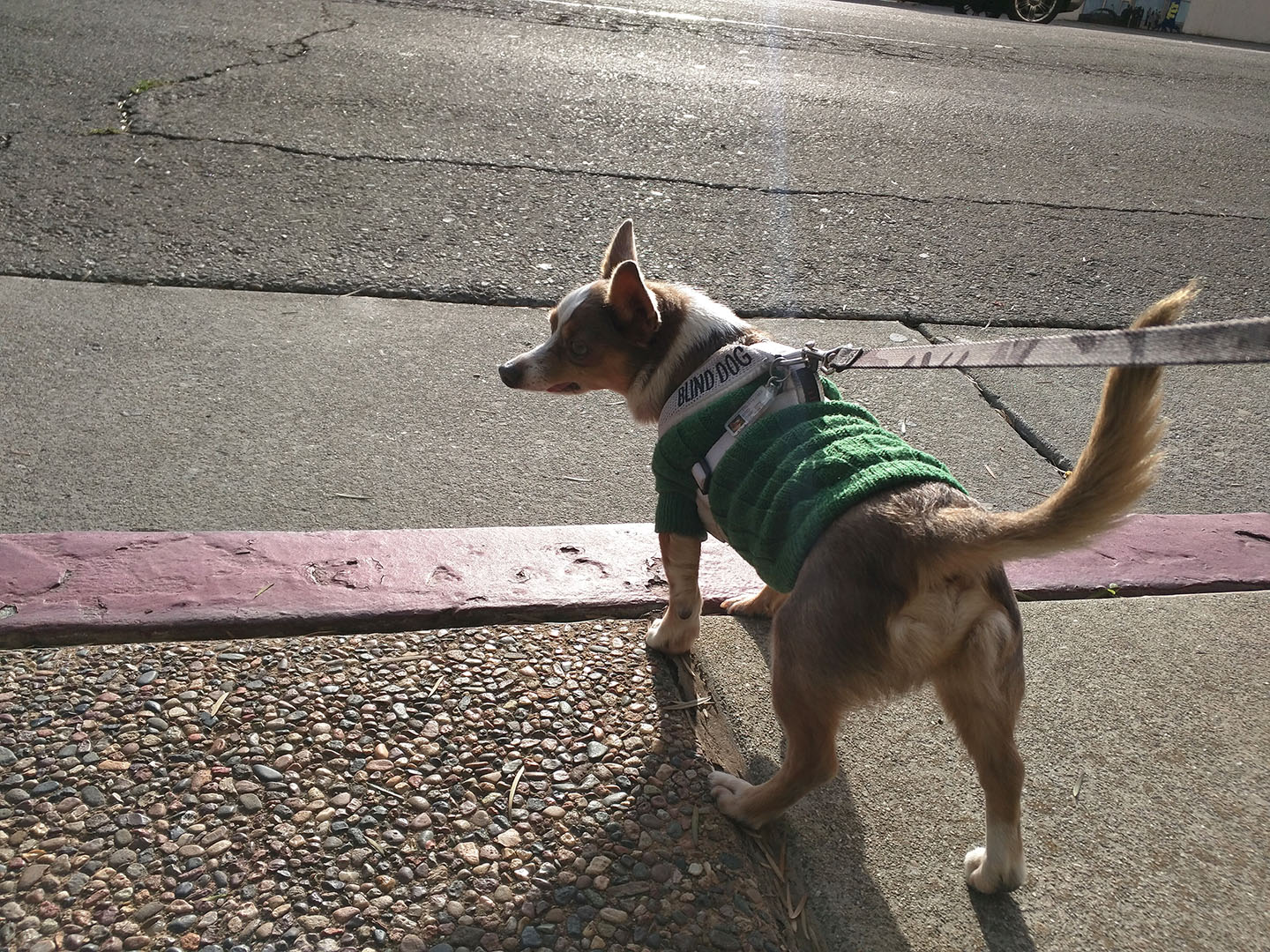
Leading up to a curb like this we would gently tug the leash and then say, "big jump!" The harness was nice because we could help make sure his landing was gentle.
Harness vs. collar
Leading your dog with a harness allows you a bit more control of their body. We recommend attaching the leash on the back and not in the front, so your dog will learn to turn both ways based on small sideways movements of the leash. A front-attached leash helps teach a dog to not pull, but can only guide the dog in one direction.
Hiking with a blind dog
Throughout his life, Stimpy loved hiking. One of the surprising and awesome things we found out was that he still loved hiking as a blind dog! On relatively flat trails we would let him off leash and guide him with voice commands. He would trot at a confident pace and we marveled at how he learned to keep himself on track. Often, he couldn't align himself perfectly with the trail, so he would kind of zig to one edge of the trail and when he felt it changing texture (like from soft sand to rocks or grass, or ground rising at the edge of dirt packed by thousands of footprints) he would zag and change direction. After a while in that direction, he'd hit the other side and zig back. Repeat as needed. This video is a good example of his technique.
If Stimpy came to an abrupt change in ground material, he would just hunker down in place and wait to be helped.
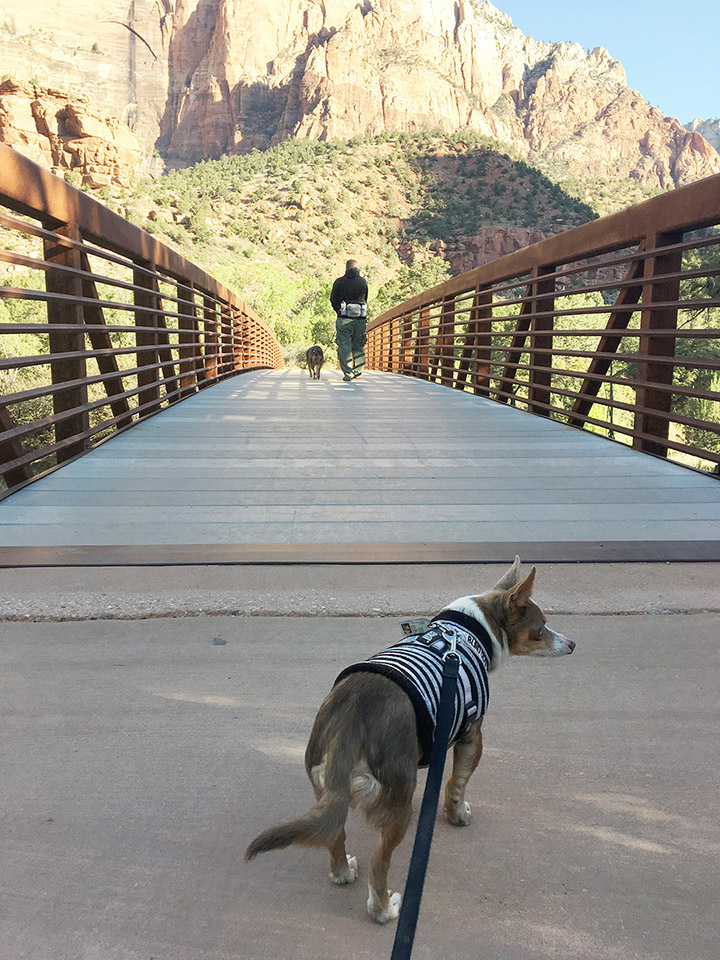
As soon as Stimpy touched that metal plank, he stopped and waited for me to pick him up.
If we were hiking a more technical trail we would put him on leash and guide him, or put him in a sling (more on that coming up!). He learned to read slight movements of the leash as directions: left, right, slow, wait, and so on. Tommi would hold tension on the leash with his index finger, and Stimpy would know whether that index finger pointed straight down, or an inch to the left or right. This video shows how Stimpy quickly changes pace when given a tiny tug on the leash, to carefully cross the wet rocky ground in a little creek.
Toys that make noise
If your dog loved fetch, get a ball with electronics inside that make noises, even when the ball is sitting still in the grass. This will help your dog find the ball.
Scent work
Make a game of placing a dozen smelly treats around the house, and encourage the dog to find them all. If he has trouble, guide him closer and closer until he finds the treat, for example tapping a ledge that has the treat on it and saying "Search!"
You can also hide the treats inside cardboard (for smaller dogs, toilet paper rolls are great, fold the ends closed), or in toys that slowly dispense the treats when rolled around. Almost any container that lets the dog smell the treat even when closed will work.
Traveling with medical needs
Specialist vet appointments
Stimpy needed to see an ophthalmologist every 3-4 months. We told our local ophthalmologist we would be traveling full-time, and they were able to give us a list of specialists across the country: http://acvo.org/ We made sure to keep all his vet and specialist records on a USB stick so that each new vet could have his complete history.
Filling prescriptions
Stimpy needed prescription eye drops to minimize the risk of glaucoma, and the drops had just a 1-month shelf life. Just like how we fill our human prescriptions on the road, we used Walmart Pharmacy for Stimpy's eye drops once we hit the road. That meant we'd visit a Walmart once a month, and just transfer the prescriptions to the next Walmart on our route. It's a fairly easy process and we never had any issues getting what we needed.
Products that helped us
Below are some products we found especially useful in keeping Stimpy comfortable and safe, while allowing him to be the adventuredog he loved being.
Blind Dog Harness
We found a harness on Amazon that had the words "BLIND DOG" on both sides and the chest. This was very helpful because Stimpy didn't "look blind" to the average person. Having a warning on him allowed people to ask before approaching him. We would highly recommend getting one.
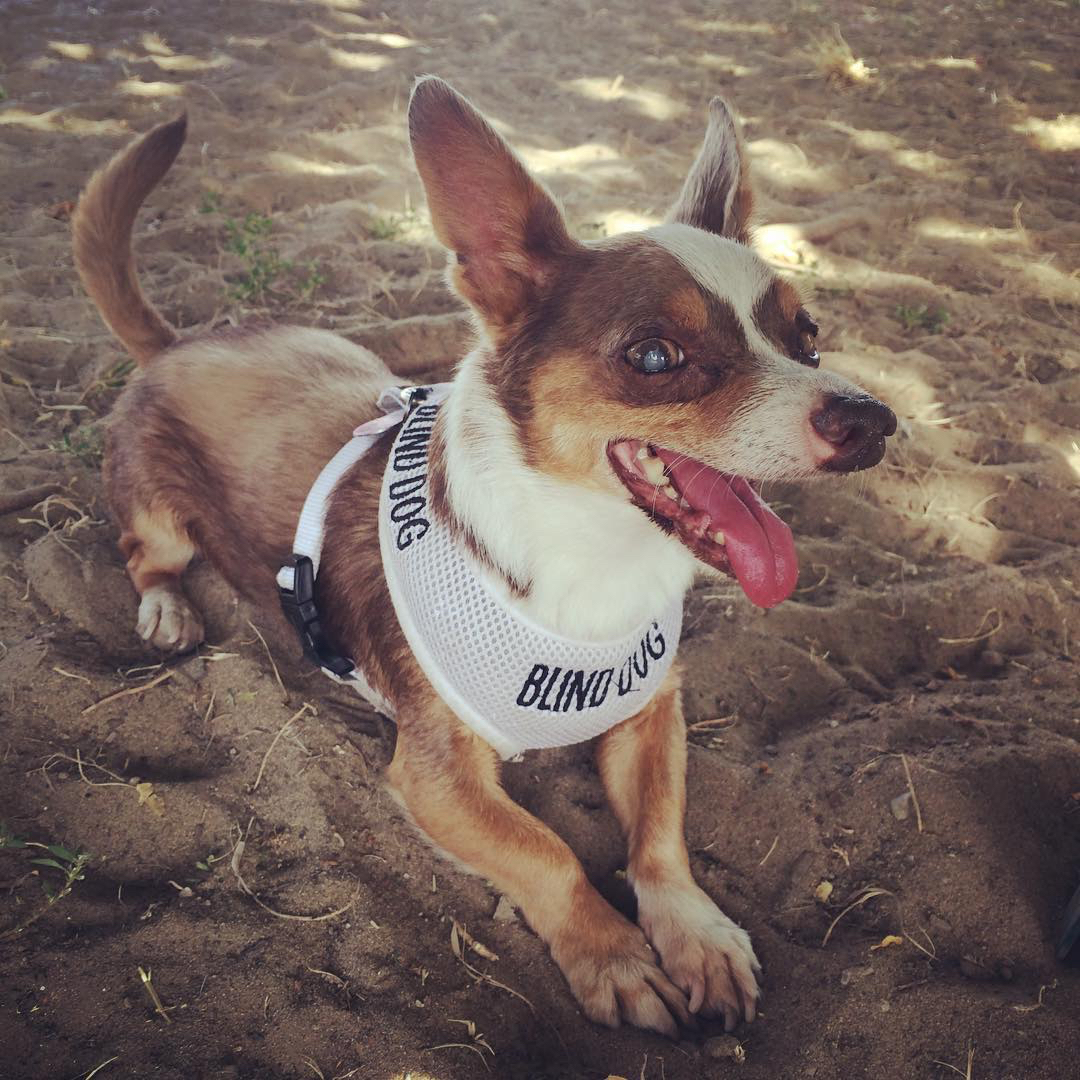
Booster Seat
This was a multi-use product for us. It was where Stimpy rode in the car. Its sidewalls kept him nestled in place, and he knew not to jump out of it while in the car.
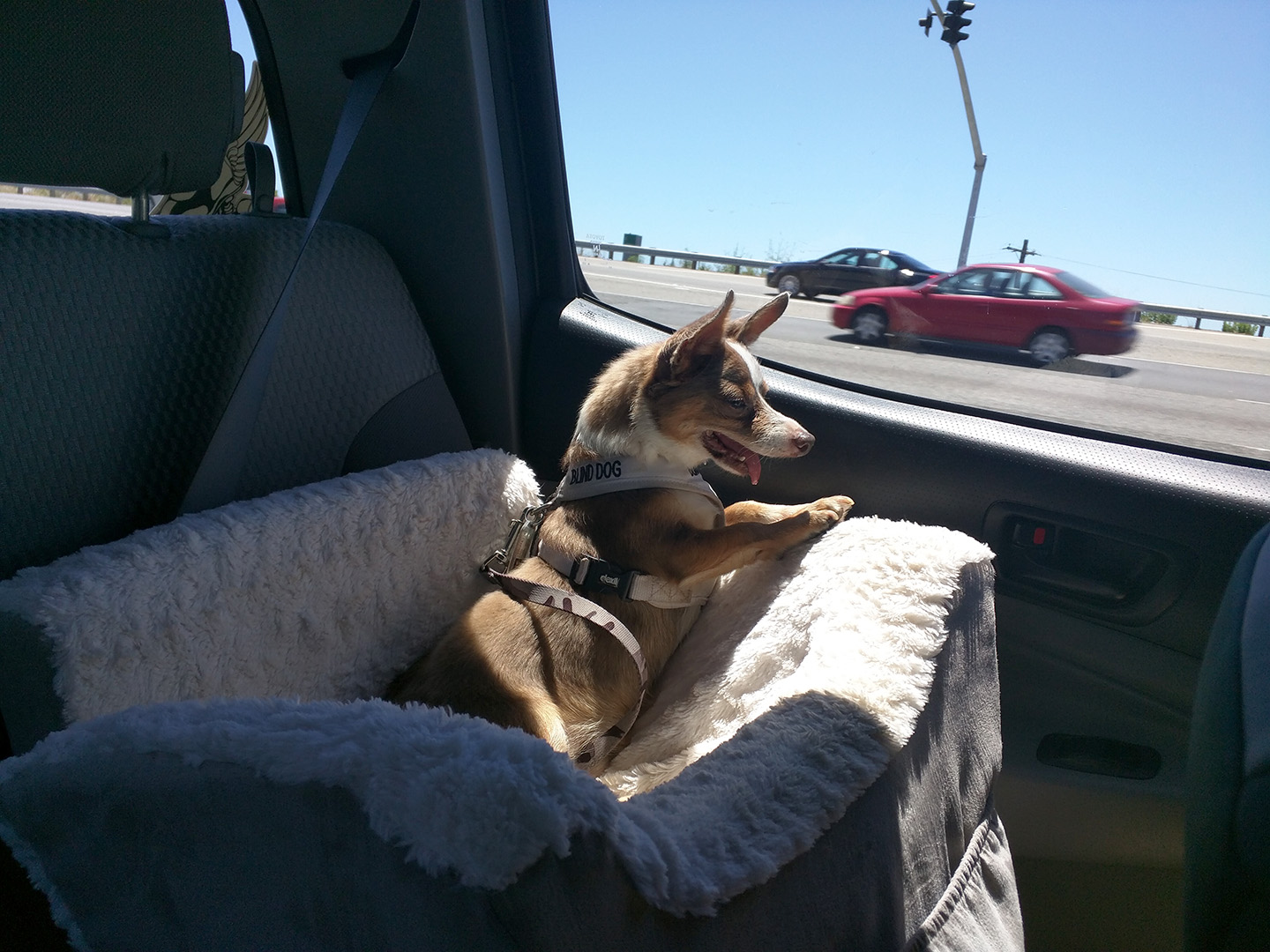
And when not in the car, we brought it inside the RV as an extra pet bed for him. No matter where it was, we had a hard time keeping Lily out of it though, even though she (ahem) didn't quite fit.
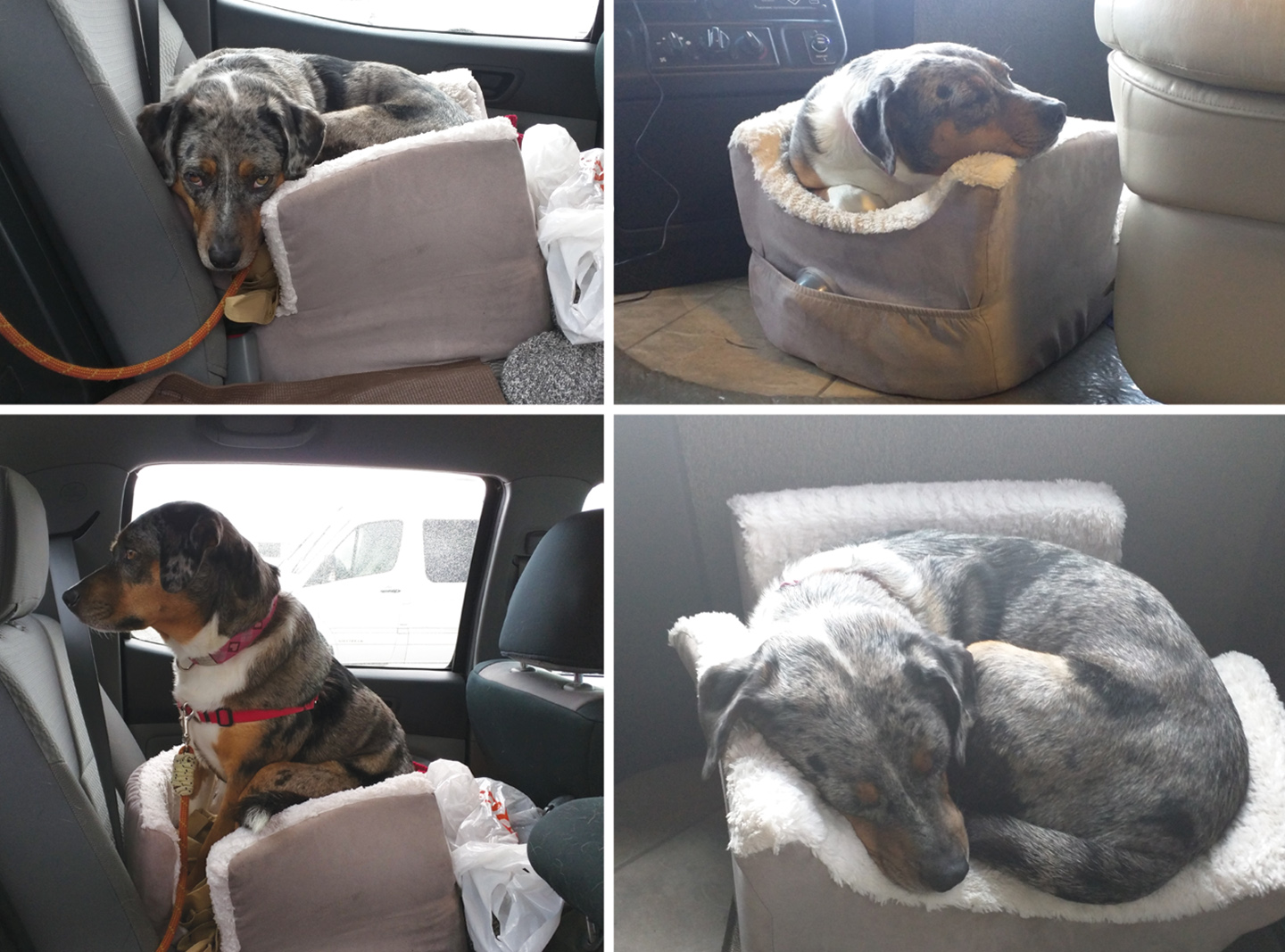
Its familiar smell made it a safe place, even in unfamiliar settings, like when we were waiting outside a shop to have our solar panels installed.
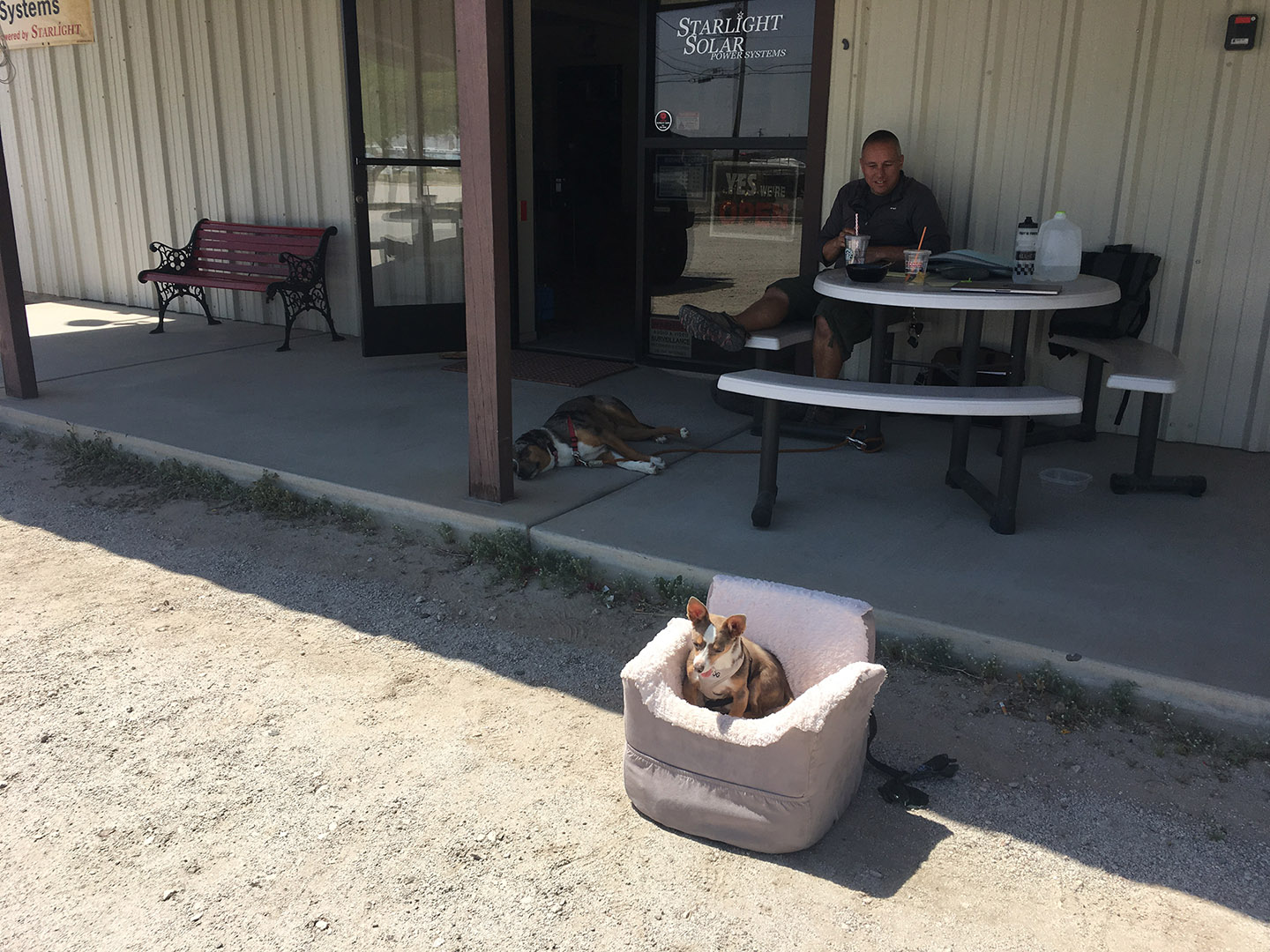
Stimpy was a sun worshiper, so we moved him into the sun to "charge."
Ours was purchased at a discount store like TJ Maxx or Marshalls, but looked something like this snoozer seat on Amazon.
Pet Jogger
We used a pet "jogger" stroller for Stimpy when we were jogging and wanted to bring him along, or when we were going to be in a busy environment and didn't feel safe having him walk in a crowd. Ours was purchased at TJMaxx, but it looked like this jogger/stroller on Amazon. Ours folded flat and was able to be stowed in one of the bays of our Class A motorhome.
Here's another stroller we borrowed while visiting family on the east coast. This one is more casual and less meant for jogging.
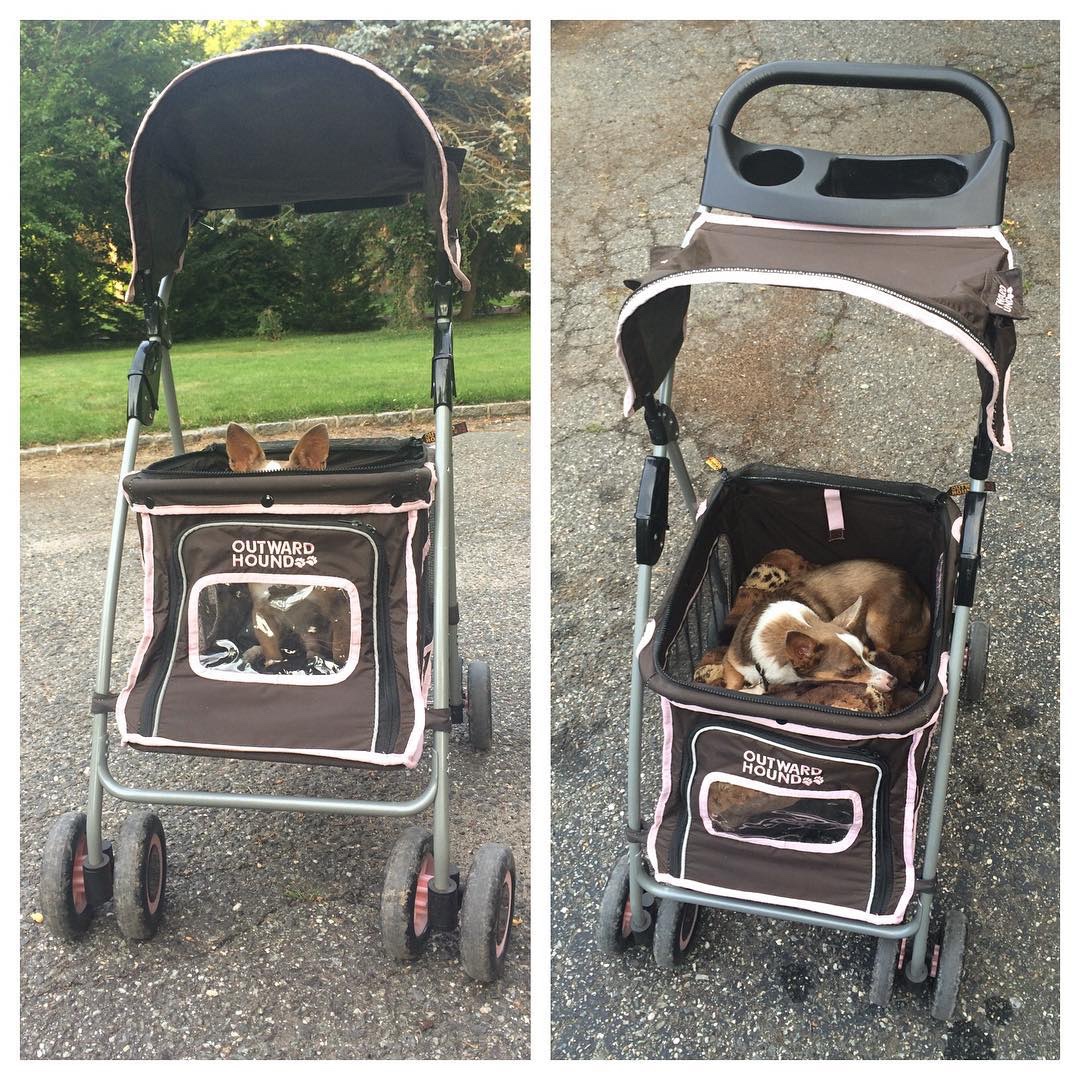
Sling
Hiking was one of Stimpy's favorite activities throughout his life. If the terrain was flat he would hike on a leash. On rougher trails, we put him in his 4LazyLegs dog sling.
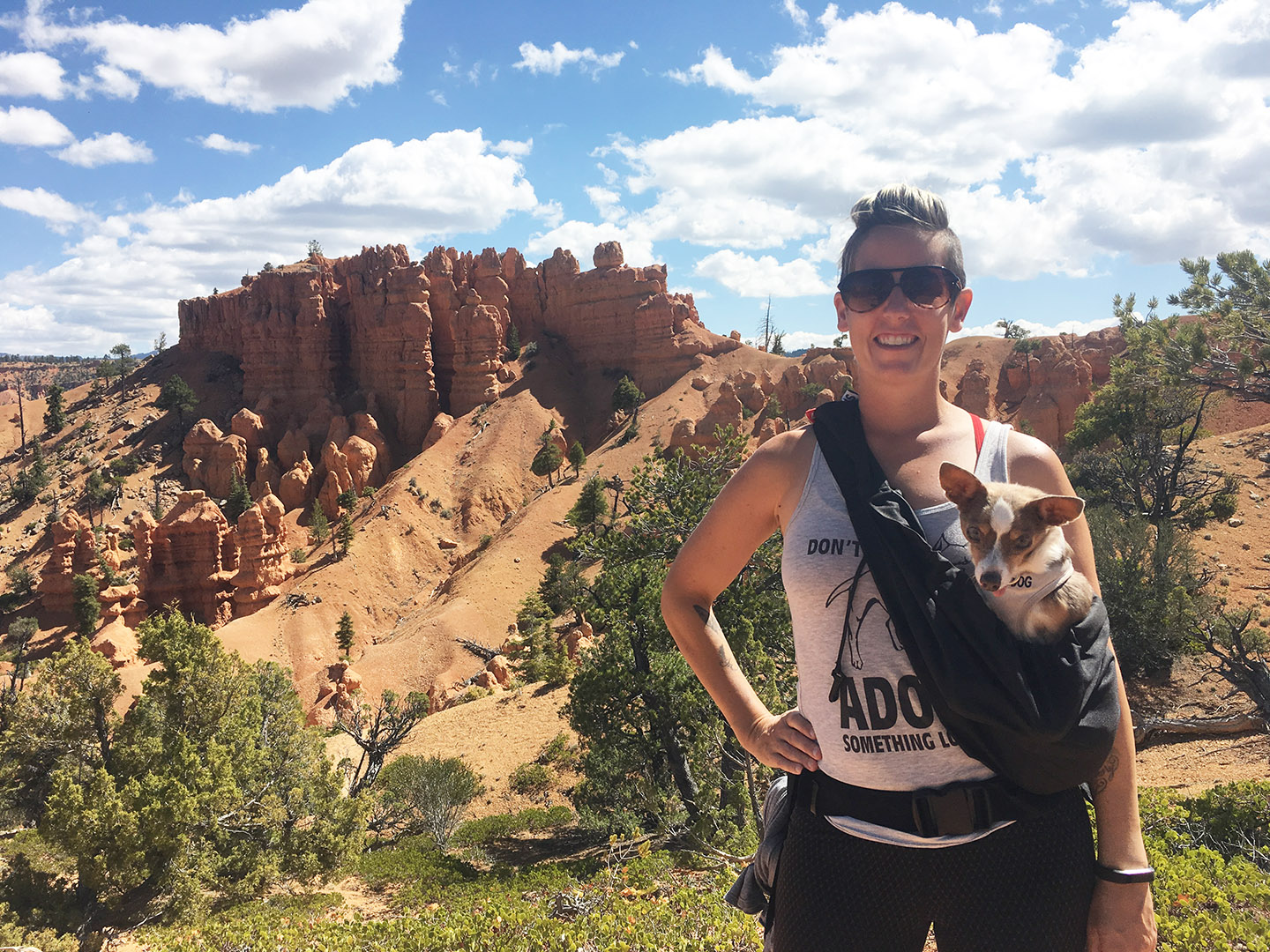
Stimpy was happy to go in the sling and the padded shoulder area made it comfortable for me to carry the 9 pounds of extra weight.
Bicycle basket
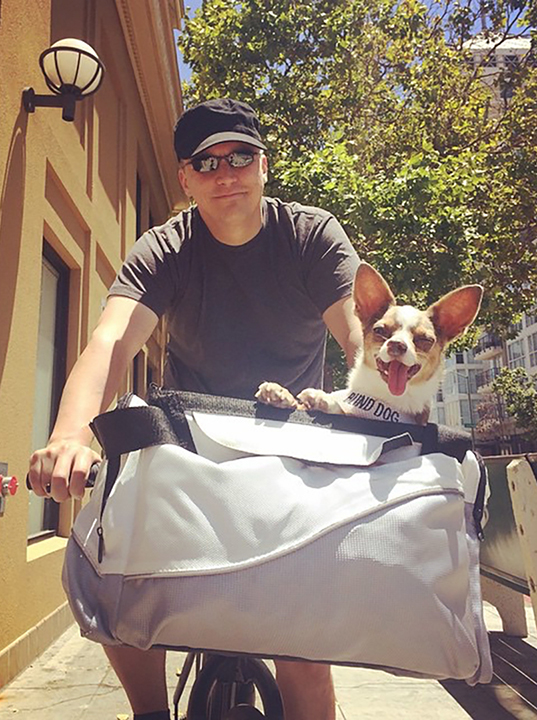
A Solvit Tagalong bicycle basket was another product we used often, to allow Stimpy to join us on adventures.
You want to look for a sturdy mounting mechanism (the Tagalong model uses a bracket that's screwed in place around the bike frame), and restraints to keep the dog from jumping out. Obviously, this product would only work for a small dog, but we've seen people pull larger dogs in bike trailers, which are great because they have a net enclosure. You can even buy one specifically built for dogs.
Blind dogs can be 100% happy
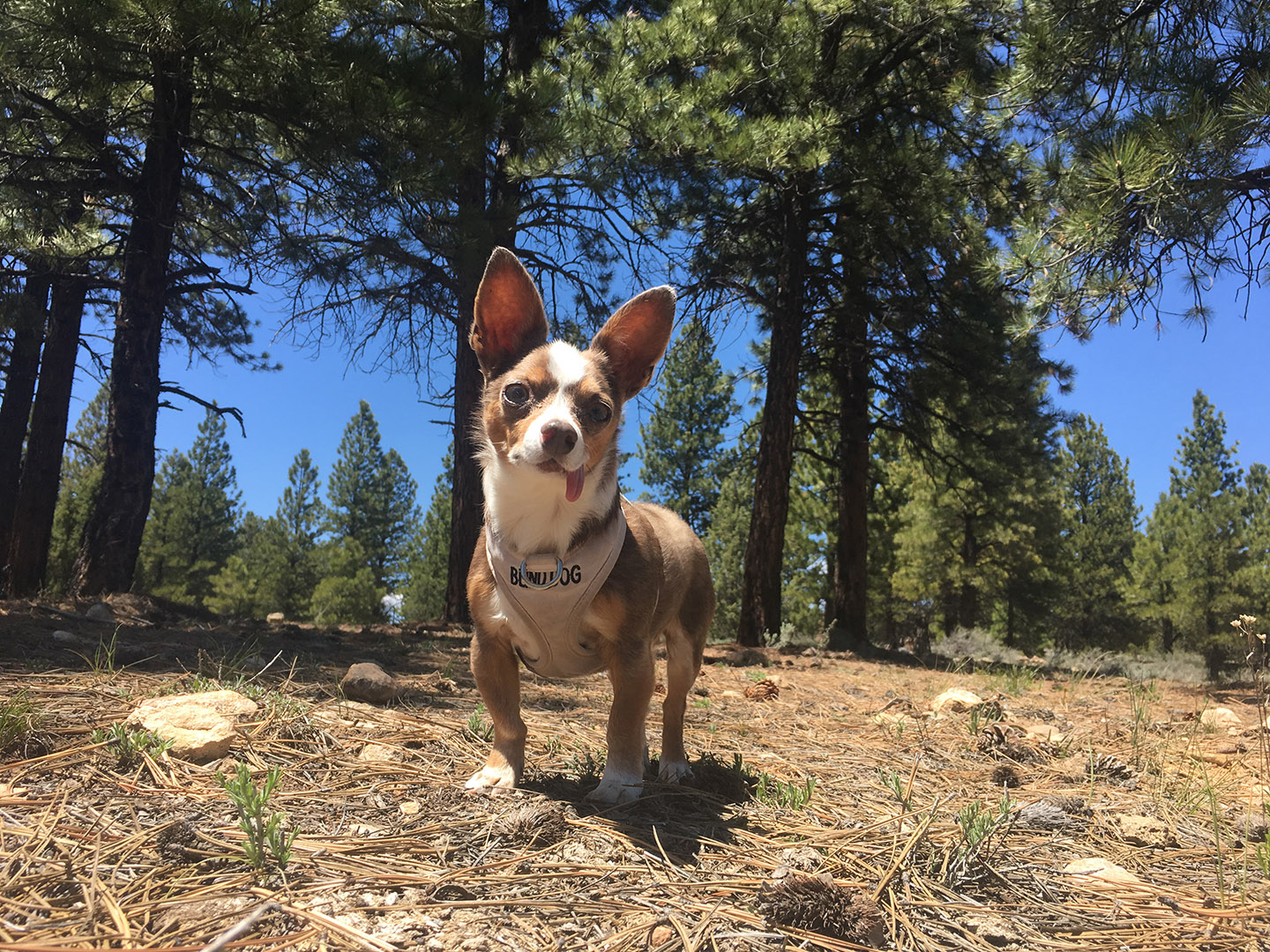
During his full-time RV life, Stimpy visited more National Parks than most people do in their lifetimes. We could tell that he also really loved that both of his "hoomins" were working from home (another benefit of RV life). I'm so glad we were able to give our senior dog this wonderful retirement.
This post originally appeared on https://fmcadventure.com/2019/01/28/how-our-blind-dog-navigated-rv-life/
Shopping links are affiliate links and help us pay for this site. Our opinions are our own, and not paid for.
